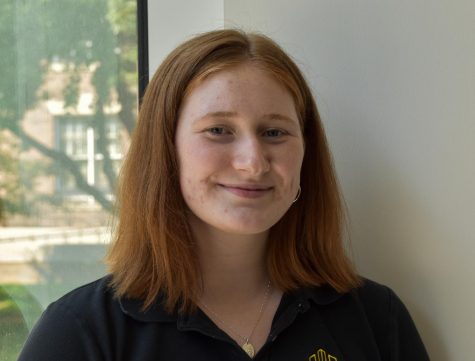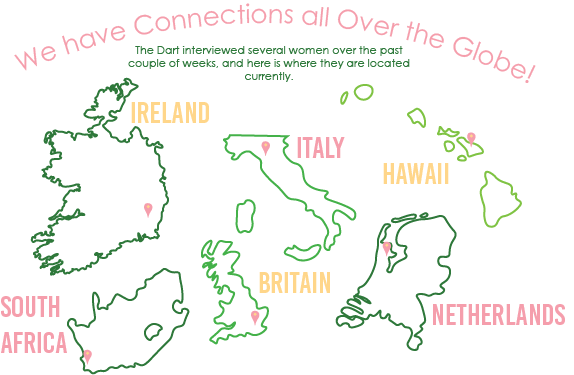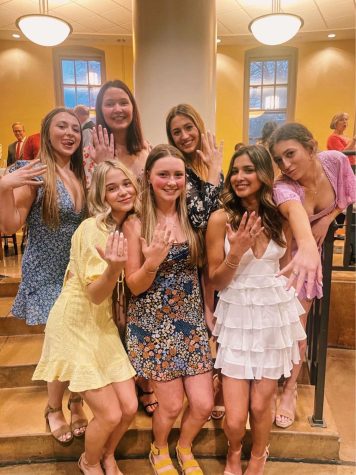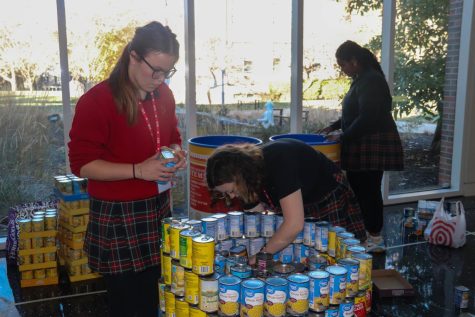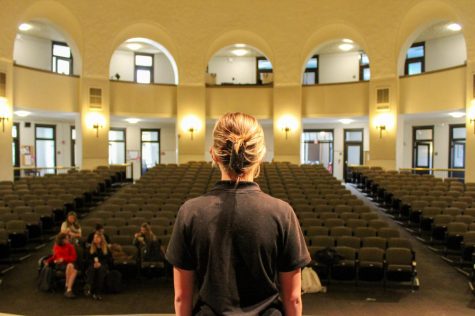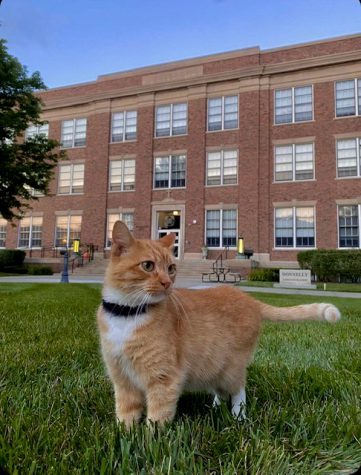I can’t talk right now, I’m doing 2020 trends
The emergence of online trends and communities in 2020 gave many solace in the midst of political unrest and a pandemic. However, the results of this virtual growth led to both positive and negative side-effects felt by youth at STA and across the world.
December 22, 2020
The year 2020 has been unlike any other. While it began with positive New Year’s resolutions, things quickly changed as graduations, funerals, weddings, holidays, baptisms and more were all put on hold, if not canceled, by early March.
Just a couple of days after the New Year began, #WWIII was trending on Twitter Jan. 3 after President Trump ordered an airstrike on an Iranian General, fueling diplomatic panic across the world. Since then, America has been plagued with a pandemic, wildfires, police brutality and countless other events that led many to feel hopeless and alone over the past 12 months.
However, some students at STA — and even beyond — have found solace in trends that have stemmed from the increased development of online communities. Senior Ally Fox utilized social media as a platform to engage in social justice activism.
Fox went viral this June on TikTok after posting a video of herself being tear-gassed at a Black Lives Matter protest in Kansas City. As a result, she now has accumulated over 73,000 followers on TikTok. The app has been her main source of stress relief this year as well as a way to advocate for the Black Lives Matter movement in her growing online community.
TikTok has grown to be an immensely popular app for teenagers over the past 12 months due to its openness to new ideas and arsenal of trends to distract users from the stresses of everyday life. Eventually, the app became a creative outlet for Fox to explore cosplay and raise awareness for social issues.
“I…think specifically on TikTok people are a lot more willing to amplify people of colors’ voices and just come together as a community to help people who have been hurt and discriminated against,” Fox said.
It is this sense of community that led many other students, such as senior Gracie Swanson, to explore the different trends on TikTok and other outlets beyond the app, such as playing Minecraft and Animal Crossing: New Horizons. Scrolling through TikToks and building virtual worlds in Minecraft and Animal Crossing helped Swanson with her feeling of isolation over the course of this year, especially as the COVID-19 virus hit and thrust everyone into quarantine.
“A lot of them were things that I had…so it was kind of like, comforting,” Swanson said. “I could pretend nothing else was happening and that I was just gonna, you know, do this. And then I’d be like, oh no, I have to do homework. And I’m going to school physically tomorrow. Just kind of, you know, it made me feel normal.”
The lack of normalcy throughout this year has allowed for social media and entertainment outlets to open completely new social doors, as well. People hundreds of miles apart are now able to meet and talk through social media, which has led to more connections between people who have never seen each other in person. Swanson herself fostered new friendships with people across the country because of her time online.
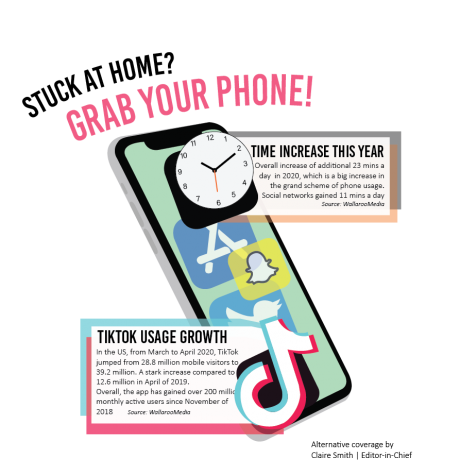
“I made a really good friend on TikTok named Paige,” Swanson said. “She lives in California. “She’s real. She’s not a middle-aged man. I double-checked. And you know, we talk every day, and we’re really close.”
For some, this digital friendship was simply a way to maintain social interaction during quarantine, but for others, it was a necessity to get them through the mental and emotional turmoil this year has caused. Sophomore Mary Katherine Ashley experienced the latter option through interacting with friends via Snapchat after her grandmother passed away this September.
“All of my friends on Snapchat, they were like, I’m so sorry for your loss,” Ashley said. “I got to [have] a platform where I could go and express myself. And it would just be like getting all my stress out. And then I would be able to go back into like, the real-world environment and be kind of less depressed and like anxious.”
However, some people believe that these recent developments in how online communities function could be potentially damaging due to the lack of in-person interaction. In addition to students being thrust into virtual school at the end of the 2020 spring semester, sports seasons were canceled as well as birthday celebrations and springtime holidays — all of which serve as a source of social interaction. For sophomore Sylvie Boughner, the idea of people becoming too reliant on technology and online communities makes her worry about how people will interact with each other in the future.
“It’s probably more negative because I can see if we get out of the whole social distancing thing,” Boughner said. “We’re not gonna really know how to act anymore, like face to face with groups of people. And I think we might end up going on our phones and just not going out that much anymore because all of our entertainment is just right on our phone.”
Boughner’s worries are not uncommon, especially when it comes to the amount of time people have spent on their screens this year. Many worry that social skills and in-person interaction will be completely different in the future. In addition, this increased time on social media has led some to feel drained, both physically and emotionally. Like Boughner, Fox also has her worries about how social media affects users, especially those who are creating content as an emotional outlet.
“A lot of the events kind of just drained people of their creative motivation,” Fox explained. “And I know because a lot of my friends have experienced the same thing. And it’s just you go through phases where you just don’t want to do anything or you don’t like anything that you’ve filmed. So you just kind of disappear.”
Throughout this year, the emergence of this newer social network has been both a comfort and a curse for people across the world, and, in the end, it seems to lie in the middle of positive and negative impacts. There is the sense of community that this new outlet offers, whether that is found in activism or making friends thousands of miles away; but there is also the creative and emotional burnout, along with the lost sense of in-person interaction. For Swanson, this mix is what makes the online world perfect for escaping this year.
“As someone who uses the internet a lot,” Swanson says. ”I’ve definitely met some people that aren’t, you know, the best. But I think for the most part, you know, everyone’s super, super nice, and everyone’s kind of looking for the same thing.”




